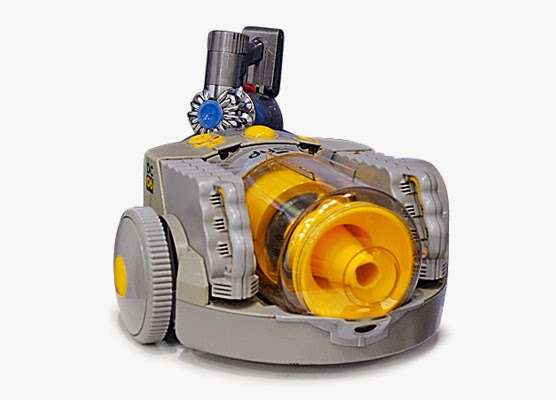 The company Dyson has developed a robot cleaner with a full optical navigation system. It is unlikely that the visitors Berlin exhibition IFA, dedicated to home appliances and electronics, could surprise the robot cleaner. In any case, not in 2014, when the shining purity stands every self-respecting manufacturer scurried round and square miniature robots, sweeping nonexistent dust. Although one exception was nevertheless: the number of wishing to see the novelty of Dyson clearly exceeded the capacity of the room where the presentation was held. That, however, is not surprising, given the fact that it was James Dyson once developed cyclone vacuum cleaner and thus a revolution in the field of home cleaning. A similar revolution audience expected at this time.
The company Dyson has developed a robot cleaner with a full optical navigation system. It is unlikely that the visitors Berlin exhibition IFA, dedicated to home appliances and electronics, could surprise the robot cleaner. In any case, not in 2014, when the shining purity stands every self-respecting manufacturer scurried round and square miniature robots, sweeping nonexistent dust. Although one exception was nevertheless: the number of wishing to see the novelty of Dyson clearly exceeded the capacity of the room where the presentation was held. That, however, is not surprising, given the fact that it was James Dyson once developed cyclone vacuum cleaner and thus a revolution in the field of home cleaning. A similar revolution audience expected at this time."History of the robot cleaner Dyson began 16 years ago - says Alex Knox, director of engineering company. - In 2001, we even produced a preproduction sample model DC06. This idea ahead of its time, since the key technologies were not yet ready - engines were not compact and efficient, and the battery - enough light and capacious. The robot turned bulky and very expensive and did not go into a series. "
Orientation on the ground
According to Alex Knox, when creating a new robot had to solve two important problems. The first is related to the efficiency of algorithms cleaning. When a man vacuuming the room, he remembers, where there was not to go there for the second time - it's the overhead of time and effort. That robot to act effectively, must know where he was cleaned, that is oriented in space. Therefore, one of the key technologies for the robot 360 Dyson Eye was the development of their own machine vision systems. The camera on the top cover closed transparent dome through a convex parabolic mirror 30 times per second circular removes the pan (360 degrees horizontally, vertically, 45) on which the recognition system searches for small areas of high contrast - the corners of rooms, furniture joints. Point in the center of the area is used as a reference system - a kind of "navigation satellites", by which she means of triangulation establishes its position in the room and builds a map of the room. In addition, Dyson Eye 360 is equipped with ultrasonic sonar, which do not allow the vacuum cleaner to deal with the furniture and walls, and the IR sensors on the bottom, to prevent the fall from the stairs. From these data, the robot builds a circuit facilities and calculates the most efficient way to clean. Once the system closes the circuit of the walls, which means that the cleaning can be completed, and return to the "base" for charging batteries. Next time, when the robot will begin the process of cleaning (on a schedule or on command), the map will be drawn again - just in case, if the room moved furniture.
Small tank
"No pollution sensors in our robot is not, they simply do not need, - says Alex Knox - effective cleaning robot makes a single pass. Therefore, the second important task for engineers was to create a system of collecting dust from any surface. To do this, we use a wide, the entire width of the body, with two kinds of brush bristles. On hard surfaces where dust is usually held electrostatic charge, work well conductive carbon fiber (carbon) bristles and nylon better sweep dust from carpets and soft coatings. But because of the size of the brush for large wheels there was no room, while small enough terrain, so we had to create a caterpillar drive - like a tank. Only instead of a gun in our robot - a vacuum cleaner with a proprietary cyclone filtration system, never lose suction power. "
Five years ago, "Popular Mechanics" talked with James Dyson about what awaits us in the near future. According to him, to turn the home cleaning industry have been advances in three areas: it is more capacious battery and light, more compact and powerful electric motors and robotics. His predictions were fully confirmed: the company's engineers have developed a miniature and highly efficient permanent magnet motors with permanent magnets (Dyson Digital Motor, DDM), operating at speeds of over 100 000 revs / min. This made possible the emergence of battery (wireless) vacuum cleaners, such as effective as conventional models. The same engine is the "heart" of the robot cleaner Dyson 360 Eye, announcement of which confirms the forecast of the famous British inventor.

Thanks for sharing this informative information about wireless vacuum cleaner with us. It's very helpful. Keep it up!
ReplyDelete